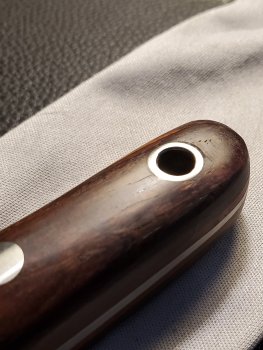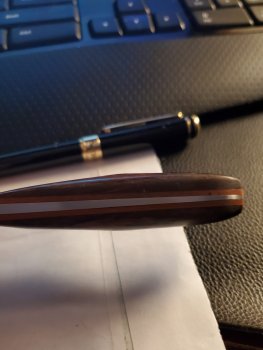Sean Jones
Well-Known Member
I'm having a devil of a time cleaning up a Cocobolo handle I'm working on behind the lanyard tube. I'm thinking I'm approaching this wrong. In the photo you can see the scuff marks behind the tube. I've tried removing them with an 800 grit belt and also hand sanding. I went back to 400 briefly hand sanding and for what ever reason they aren't coming out. I'd rather not go back further in grit...at least I didn't think I'd need to.
So do I just persevere or am I missing something obvious?

So do I just persevere or am I missing something obvious?


